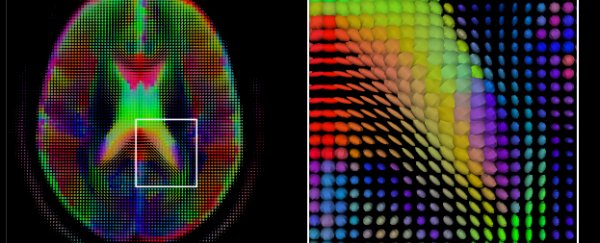The human brain is often described as the ultimate parallel computing machine - it's a sophisticated device that's capable of storing memories, learning, and keeping us alive all at the same time. As far as multitasking goes, we've struggled to beat evolution's design.
But unfortunately scientists still don't know much about how our brain manages to process multiple tasks at once or, in fact, how many parallel actions it can undertake.
Now a neuroscientist from the National Kapodistrian University of Athens in Greece has managed to count the number of central processing units or "CPU cores" that are present in the human brain - and has found that, surprisingly, humans are only processing around 50 tasks at once, even when we're performing complex activities.
However, these tasks aren't performed by individual neurons - they actually involve complex groups of neurons all working together for a higher function.
To work out how the brain processes tasks, neuroscientist Harris Georgiou had to first map out activity across a human brain. Which is pretty hard when you consider the fact it consists of around 100 billion neurons that each have up to 10,000 connections with their neighbours.
"All of this is packed into a structure the size of a party cake and operates at a peak power of only 20 watts, a level of performance that computer scientists observe with unconcealed envy," writes MIT Technology Review.
To tease out what was going on, Georgiou asked people to perform two tasks while sitting in a functional magnetic resonance imaging (fMRI) machine and monitored how their brains reacted.
fMRI machines measure the activity of the brain by monitoring changes in the levels of oxygen in the blood passing through the brain - the more active areas are using more oxygen, and so in this way researchers can map where our brains are the busiest. The machine then breaks down the brain into three-dimensional pixels known as voxels, each about five cubic millimetres in size.
In the first task, people had to watch a screen showing either a red or green box on the left or right side, and had to hold up a particular finger in response to what they saw.
In a second, easier task, the subjects were shown a series of images that fell into categories such as faces, houses, chairs, etc. They then had to spot when the same object appears twice.
The results showed that there were a maximum of around 50 independent process at work in human brains performing complex visuo-motor tasks, such as the first one. In the second task, the brain was using fewer processes.
As MIT Technology Review explains:
"[The research] implies that parallelism in the brain does not occur on the level of individual neurons but on a much higher structural and functional level, and that there are about 50 of these."
The results have been published in arXiv.org, where Georgiou writes:
"Although this number [can not] be defined as a strict threshold but rather as a continuous range, when a specific activation level is defined, a corresponding number of parallel processes or the casual equivalent of "cpu cores" can be detected in normal human brain activity."
"This means that," Georgiou told the MIT Technology Review, "In theory, an artificial equivalent of a brain-like cognitive structure may not require a massively parallel architecture at the level of single neurons, but rather a properly designed set of limited processes that run in parallel on a much lower scale."
And this is the kind of information that will be crucial to anyone hoping to design a more efficient, brain-like computer chip in the future. Budding software engineers, take note.
When you think about it, it's pretty crazy (and awesome) that with all our technology, we're still trying to play catch up with the processing power of evolution.
Source: MIT Technology Review, io9
